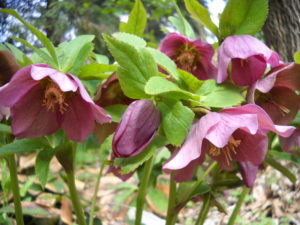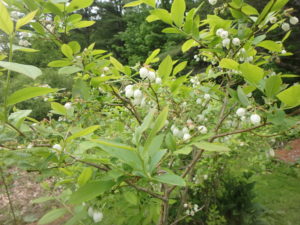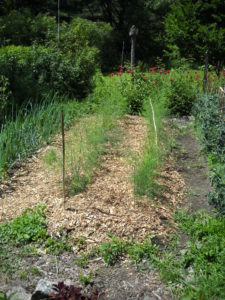Three Keys to a Successful Garden
Being a great gardener is pretty simple. Know what your plants need in terms of sun, soil and water. Do that, and make adjustments as necessary, and your plants will thrive. Of course, that is often easier said than done.
Sunshine is what drives plant growth. Vegetables and many flowers do best with full sun. Full sun is generally defined as 6 hours of direct sun. But not all sun is equal. The sun at noon is much stronger than sun at 6am. An hour of afternoon sun is, in my opinion, worth nearly 2 hours of morning sun.
But many trees, shrubs and perennials want part sun or light shade. That’s where the gardener must decide. Put those hellebores on the north side of the barn? Or perhaps under the dappled sun that filters through a maple? That’s why I like to buy perennials in multiples. Try some here, some there. To do so, starting some by seed makes sense as you have more plants to play with – without breaking the bank.
Starting perennials by seed is easier than you might think, but requires patience. Unlike annual flowers, most perennials will not flower the same year they are planted. Biennials like hollyhocks and many foxglove will bloom the year after you start the seeds, then die. But some hollyhocks defy the odds and come back to bloom, year after year – for good gardeners who cut them back right after they bloom.
The right soil is key for most plants. Some want sandy soil that drains quickly and stays relatively dry in winter because wet soils will rot their roots. Others need moist soils all summer or they go limp on hot days. You can learn by trial and error, but I try to minimize errors by reading up on a plant to see what soil it needs. My go-to book for this is Steven M. Still’s book, Manual of Herbaceous Ornamental Plants. It is over 800 pages of great information.
Soil pH, a measure of acidity, is important to plants. Most perennials do best in soils with a pH of 6.2 to 6.8 which is just shy of neutral (7.0). Know your pH by testing every 3 to 5 years, as pH is easy to adjust. Want blueberries? You must have very acidic soil, in the 4.5 to 5.5 range. You can spread elemental sulfur around the bushes, or add an acidic fertilizer made for holly and rhododendrons. Do that right after blooming.
I recommend getting a soil test done by a good lab every three years. Cooperative Extension in your state can do that for a fee. It will give you useful information about everything except nitrogen. Nitrogen levels vary considerably over the short term, so most labs do not measure them. But if you have good levels of organic matter, your probably do not have a major deficit. Organic fertilizers applied at planting time will boost nitrogen and add some for later in the form of slow-release nitrogen components in the mix. But don’t add too much fertilizer, especially chemical fertilizers that can burn roots and push fast, unhealthy growth.
Soil tilth and texture is important too. That’s what an experienced gardener learns by picking up a handful of soil and feeling it. Excellent soil is fluffy and does not compact easily. It has space for water and air. Moisten some soil and rub it between your fingers. If it feels sticky, it’s dominated by clay. If you feel many sharp bits, it’s sandy. A good loam is somewhere in between the two. You can improve clay or sandy soils but adding compost, lots of compost.
I make compost, but also buy it each year. I add some to every planting hole and every new bed. I mix it in with potting soil for container growing. I spread it over the lawn to improve it, and to nourish the roots of an aging maple with roots under the lawn. Earthworms will work the compost into the soil, so I don’t have to.
Moisture is key for all plants. For most, all growth stops when the soil dries out. And watering a plant that is flopping over and gasping for breath does not fix the problem immediately. Yes, most plants will look better within a day of watering, but it can be a few days or a week before they recover fully and start growing. In hot times, monitor moisture by eye or finger, especially for seedlings just planted.
Mulch is great for holding in moisture. It protects the soil from the sun’s desiccating heat. It minimizes evaporation. It helps to prevent weeds from growing.
An inch and a half or two inches of finely ground bark mulch will do a good job of preventing most annual weed seeds from growing – but will not deter roots of pernicious weeds from sending up sprouts. Heck, I’ve heard stories of Japanese knotweed growing right through asphalt driveways, and I know witch grass and ferns will pop up through most mulches.
One of the great things about getting older is that I’ve made plenty of mistakes – and learned from them. We all kill plants. But doing your homework and paying attention is really important. Learning from our errors and omissions makes us great gardeners.
Henry’s website is www.Gardening-Guy.com. You can reach him by e-mail at henry.homeyer@comcast.net or send a letter to P.O. 364, Cornish Flat, NH 03746. Please include a SASE if you want a mailed response.





